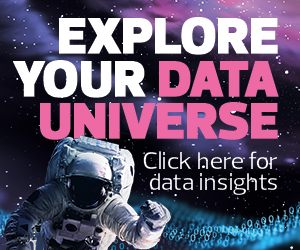Integrated data management takes time to achieve due to the complexity of aligning systems, processes and data governance across an organization. In return, it brings significant advantages, such as improved decision-making, enhanced data security and streamlined operations.
“In my experience, integrating data from various systems allows banks to create a 360-degree view of customer, advanced and real-time risk management,” says Sanjay Madaan, senior vice president of engineering, core banking and partner platforms at SMBC MANUBANK. “Cross-selling opportunities, smart insights, customer stickiness and retention are some of the additional benefits.”
But banks don’t need to fully integrate all of their data before seeing some of the benefits. According to Noel Yuhanna, vice president and principal analyst at Forrester, “IT leaders should avoid attempting to integrate all data at once. Instead, they should initially focus on relevant use cases and gradually expand integration efforts to include additional sources.”
Here’s why integrated data management is worth pursuing, with help from tools to overcome key integration obstacles.
Integrated Data Management Uncovers New Insights
One of the biggest benefits of data integration, Yuhanna says, is that it “uncovers new insights that support better, data-driven decisions.” Why? Higher quality data means better analytics.
According to a recent McKinsey survey, many banks have ramped up their investments in advanced analytics. By implementing integrated data management, they can fully unlock its potential. Once diverse data is collected from various sources, organized and made accessible, banks can leverage data mining to uncover new insights that may have otherwise remained hidden.
Click the banner below to learn why a modern data platform is important.
Connected Data Drives More Accurate Insights
Predictive analytics can help financial organizations anticipate swings in the stock market, the housing market and just about anything else related to customers’ wants and needs. This allows organizations to strategize proactively instead of reactively. Yuhanna also highlights how data integration “enables access to connected data, driving more accurate and actionable insights.” Once data is taken out of silos and integrated, the data becomes much richer in quality. Suddenly, an IT leader’s predictive and planning abilities become more accurate.
Integrated data management also ensures that these inputs are accurate and relevant for the analysis at hand. Morgan Stanley, for instance, uses machine learning, predictive analytics and workflow technology to help advisers predict the next best action they should suggest to their customers.
Precise Predictive Analytics Improves Risk Management
Once IT leaders have access to more precise predictive analytics, banks can also begin to refine their financial projections (revenue, expenses and lending decisions, for example).
A more holistic data set also improves a bank’s regulatory reporting capabilities, helping IT leaders identify any unallocated funds or regulatory compliance that may have been overlooked. This macro-level of visibility ultimately helps IT leaders refine their risk mitigation strategies.
READ NEXT: Financial services technology solutions.
Use the Right Tech Tools to Overcome Obstacles to Data Integration
While immensely valuable, data integration is not an easy task. “Numerous data sources can complicate integration efforts, making it difficult to determine which ones to prioritize,” Yuhanna says. “Combining structured and unstructured data poses significant challenges in achieving unification to deliver integrated results.”
UP NEXT: How to extract value from your data?
However, tools such as Microsoft SQL Server integration Services and Oracle Data Integrator can help make the process simpler. There are also financial tools, such as Informatica PowerCenter, which is used by Bank of America, or IBM’s Cloud Pak for Data Integration. IT leaders can also seek expert guidance from CDW on how to create an integrated data ecosystem (or unified platform) to advance their analytic capabilities.
According to Yuhanna, “IT leaders should explore emerging AI and data intelligence tools that can streamline and accelerate data integration, enhancing efficiency and effectiveness.”












